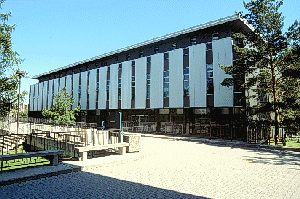PDF
The Canadian War Museums art collections as a site of meaning, memory, and identity in the twentieth century Item Info
- Title:
- The Canadian War Museums art collections as a site of meaning, memory, and identity in the twentieth century
- Creator:
- Brandon, Laura
- Date Created:
- 2002
- Degree Awarded:
- Doctor of Philosophy
- Subjects:
- museums memory art
- Geographical Focus:
- Canada Ottawa Canadian War Museum
- Supporting Materials:
- n/a
- Description:
- ‘The Canadian War Museum (CWM) has custody of one of the finest twentieth- century official war art collections in the world. Given this fact, it has until recently received limited attention and is relatively unknown. In the context of recent publications dealing with issues of memory and identity, the ten studies that comprise this dissertation examine some of the reasons why this might have been the case. They explore the worth of the art in the context of its historical and cultural meaning. As well, they examine the outside activity that has surrounded the collections’ history beginning with the First World War and ending with the announcement of a new war art nitiative by the Department of National Defence (DND) in June 2001 ‘The overarching theoretical underpinning to this dissertation is largely concemned with the construction of social memory in relation to the creation of identity. Significantly important to the analysis is the corollary of remembering, “forgetting.” The Canadian War Museum, as the single largest repository of official war art, provides 2 particularly fruitful place to explore the place of forgetting in the construction of memory, as the collections remain, with very few exceptions, intact. It is thus possible to examine what was forgotten as well as what now forms the official artistic memory of war in Canada. The thesis argues that the history of the war art collections in Canada cannot be divorced from the political, institutional, social, and cultural milieu in which the art had its origins. Its ebbs and flows within the Canadian consciousness over time, it is posited, involve both active encouragement and active discouragement. Specifically, it is suggested that aesthetic considerations as to the worth of war art are secondary by far to its value, or lack of value, to varying interest groups at different times. Furthermore, when aesthetic value is assigned to certain works of art, artists, or styles these come about as a result of contextual pressures and not as a result of successful war art exhibition Canvas of War: Masterpieces from the Canadian War Museum as its starting point, this dissertation examines how a show produced by 2 ‘national public institution can, given a particular set of circumstances — in this case the 50th Anniversary of the end of the Second World War in 1995 - move from being a display of 2 little-known collection of publicly-owned art to one that can assume a role as a site of memory.
Source
- Preferred Citation:
- Brandon, Laura. The Canadian War Museums art collections as a site of meaning, memory, and identity in the twentieth century. 2002. Carleton University, Doctor of Philosophy.
- Reference Link:
- https://cuhistory.github.io/grads/items/hist_174.html
Rights
- Rights:
- Copyright the author, all rights reserved, unless otherwise indicated.

